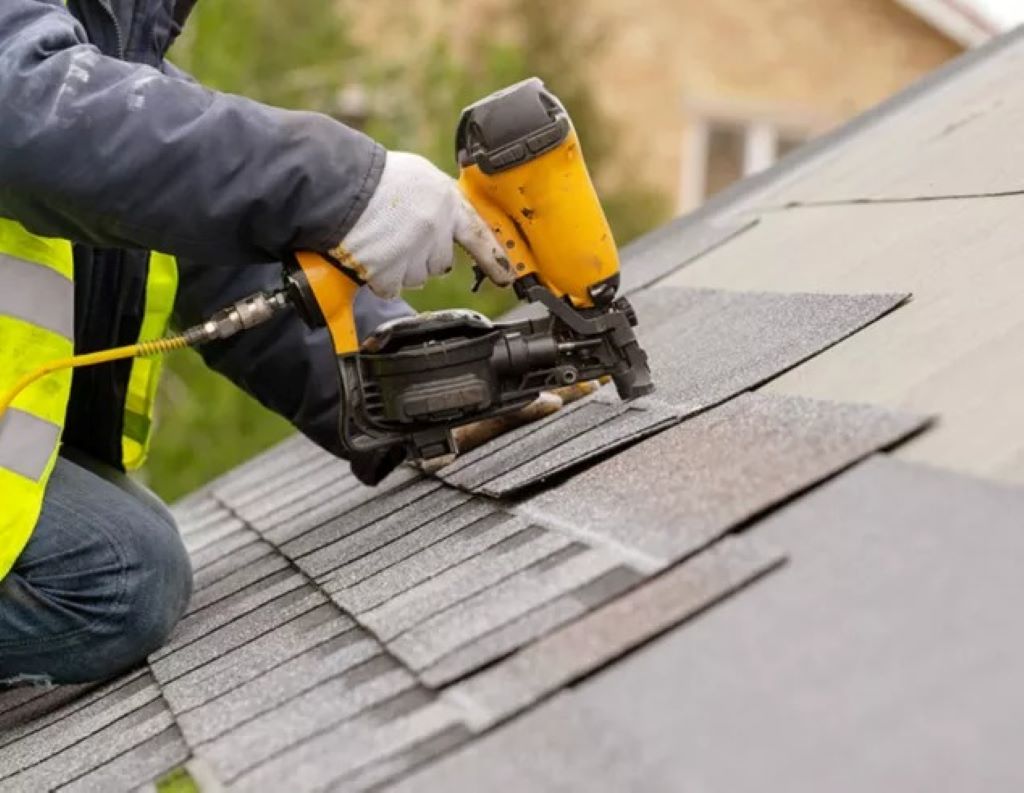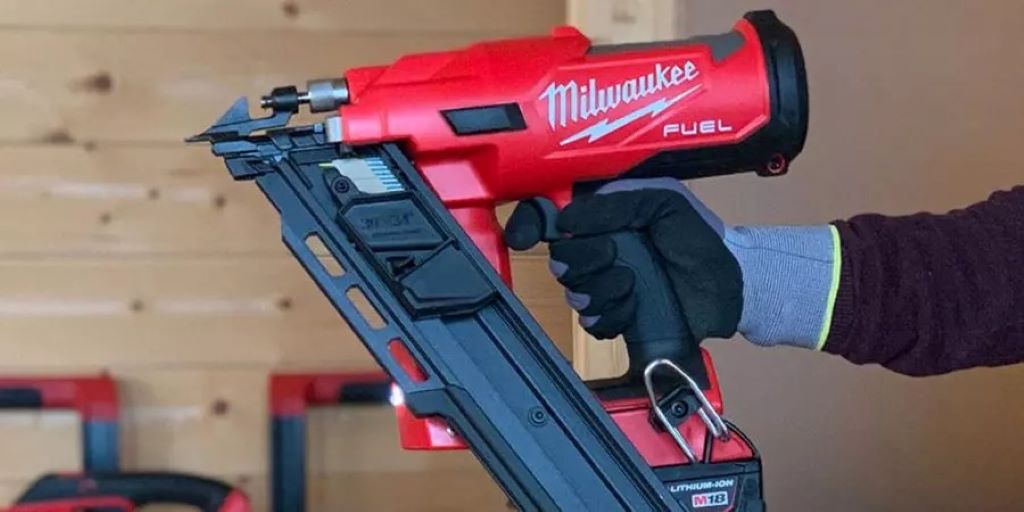Imagine you’re on a construction site, the frame of a new home rising against the skyline. Every nail driven needs to hold fast against wind, weight, and time. That’s where a 10 gauge nail gun steps in—a powerhouse tool built for heavy-duty framing that delivers unmatched strength and precision. Whether you’re a professional contractor or a DIY enthusiast tackling a big project, understanding the ins and outs of a 10 gauge nailer can make or break your build. In this guide, we’ll dive deep into what makes these tools essential, how to choose the right one, and tips for getting the job done efficiently. Let’s nail it!
What Is a 10 Gauge Nail Gun?
A 10 gauge nail gun is a specialized pneumatic or cordless tool designed to drive thick, large-diameter nails into tough materials like lumber, engineered wood, or even metal. The “10 gauge” refers to the thickness of the nails it uses, with a shank diameter of approximately 0.134 inches. These nails, often 2.5 to 3.5 inches long, are ideal for structural applications where maximum holding power is critical.
Unlike smaller gauge nailers (like 15 or 18 gauge), which are suited for trim or light woodworking, 10 gauge nail guns are built for framing, sheathing, and decking. They’re commonly used in:
- House framing (walls, floors, and roofs)
- Deck and fence construction
- Attaching plywood or OSB to structural beams
- Heavy-duty carpentry projects
The robust design of these nailers ensures nails penetrate deeply and securely, creating joints that withstand significant stress.
Why Choose a 10 Gauge Nail Gun?
So, why opt for a 10 gauge nailer over other tools? Here are the key benefits that set it apart:
- Superior Holding Strength
The thick, low-gauge nails driven by a 10 gauge nailer provide exceptional shear and pull-out resistance. This makes them perfect for load-bearing structures like wall studs or roof trusses. For example, a 10d (3-inch) 10 gauge nail has a wider diameter than a 16 gauge nail, ensuring a stronger grip.
- Speed and Efficiency
Compared to hand-nailing with a hammer, a 10 gauge nail gun drives fasteners in seconds, saving hours on large projects. Sequential or bump-fire modes allow you to choose between precision or rapid-fire nailing, boosting productivity.
- Versatility in Tough Materials
Whether you’re working with dense hardwoods, pressure-treated lumber, or engineered materials, a 10 gauge nailer powers through with ease. Ring-shank or galvanized nails further enhance performance in outdoor or high-moisture environments.
- Reduced Risk of Wood Splitting
The precise driving mechanism minimizes wood splitting compared to manual nailing, especially when using ring-shank nails that grip tightly without compromising material integrity.
Types of 10 Gauge Nail Guns
Not all 10 gauge nail guns are created equal. Here’s a breakdown of the main types to help you choose:
Pneumatic 10 Gauge Nail Guns
- Power Source: Compressed air via an air compressor.
- Pros: Lightweight, powerful, and cost-effective. Ideal for professional use on large job sites.
- Cons: Requires an air compressor and hose, limiting mobility.
- Best For: Contractors with access to compressed air systems.
Cordless 10 Gauge Nail Guns
- Power Source: Battery-powered, often with fuel cells for gas-driven models.
- Pros: Portable, no cords or hoses. Great for remote sites or smaller projects.
- Cons: Heavier due to battery weight, and fuel cells add ongoing costs.
- Best For: DIYers or pros working in areas without power or air compressors.
Framing vs. Specialty Models
Most 10 gauge nailers are framing nailers, but some are designed for specific tasks like roofing or siding. Framing models typically use clipped-head or full-round-head nails, with magazine angles (21° or 30°) affecting nail collation and tool balance.

Key Features to Look for in a 10 Gauge Nail Gun
When shopping for a 10 gauge nailer, prioritize these features to ensure performance and durability:
- Magazine Capacity: Look for a magazine that holds 60–100 nails to reduce reload frequency.
- Depth Adjustment: Tool-free depth control lets you customize nail penetration for different materials.
- Firing Modes: Sequential firing for precision; bump-fire for speed.
- Anti-Jam Technology: Quick-release mechanisms save time when nails jam.
- Weight and Ergonomics: A lighter, balanced tool with a rubber grip reduces fatigue during long sessions.
- Nail Compatibility: Ensure the gun accepts both smooth and ring-shank nails, as well as galvanized options for outdoor use.
How to Use a 10 Gauge Nail Gun Safely and Effectively
Using a 10 gauge nail gun requires skill and caution. Follow these steps to maximize results and stay safe:
- Prepare Your Workspace
- Clear debris and ensure stable footing.
- Wear safety gear: goggles, gloves, and ear protection.
- Check the nail gun for damage or jams before use.
- Load the Magazine
- Disconnect the power source (air hose or battery).
- Insert the correct nail strip (e.g., 10 gauge, 3-inch ring-shank) into the magazine, ensuring proper alignment.
- Secure the magazine and reconnect the power source.
- Adjust Settings
- Set the depth adjustment to match your material (shallower for plywood, deeper for studs).
- Choose the firing mode based on your task.
- Drive Nails
- Hold the gun firmly at a 90° angle to the surface.
- Press the nose against the material and pull the trigger (sequential mode) or bump the nose while holding the trigger (bump-fire mode).
- Space nails according to project specs (e.g., 6–8 inches apart for sheathing).
- Maintain the Tool
- Clean the nailer after each use to remove dust and debris.
- Lubricate pneumatic models with tool oil as recommended.
- Store in a dry, secure case to prevent rust or damage.
Choosing the Right Nails for Your 10 Gauge Nail Gun
The nails you use are just as important as the tool itself. Here’s what to consider:
- Length: 2.5–3.5 inches for framing; shorter for sheathing.
- Type:
- Common Nails: Smooth shank, cost-effective for indoor use.
- Ring-Shank Nails: Textured for superior grip in outdoor or high-stress applications.
- Galvanized Nails: Rust-resistant for exterior projects.
- Head Style:
- Clipped-Head: Allows tighter collation, reducing reloads.
- Full-Round-Head: Meets strict building codes for maximum strength.
Always check your nail gun’s manual to confirm compatible nail sizes and types. Using the wrong nails can cause jams or damage the tool.
Top 10 Gauge Nail Gun Recommendations for 2025
Here are three standout 10 gauge nail guns based on performance, durability, and user feedback:
- DEWALT DPFR2190 Framing Nailer
- Type: Pneumatic, 21° magazine.
- Features: Tool-free depth adjustment, anti-jam mechanism, 60-nail capacity.
- Best For: Professional framing and decking.
- Price: ~$159 at Home Depot.
- BOSTITCH F21PL Framing Nailer
- Type: Pneumatic, 21° magazine.
- Features: Interchangeable tips for framing or metal connectors, lightweight at 8.1 lbs.
- Best For: Versatile construction projects.
- Price: ~$257 at Amazon.
- Metabo HPT NR90AES1 Framing Nailer
- Type: Pneumatic, 21° magazine.
- Features: Selective actuation switch, ergonomic grip, 64-nail capacity.
- Best For: High-volume framing with minimal fatigue.
- Price: ~$179 at Home Depot.
Common Mistakes to Avoid with a 10 Gauge Nail Gun
Even pros make mistakes. Here’s how to steer clear of common pitfalls:
- Using the Wrong Nails: Mismatched gauge or length can jam the tool or weaken joints.
- Overdriving Nails: Set the depth properly to avoid sinking nails too deep, which can damage wood.
- Neglecting Maintenance: Skipping cleaning or lubrication shortens tool lifespan.
- Ignoring Safety: Always disconnect the power source when loading or clearing jams.
FAQs About 10 Gauge Nail Guns
Can a 10 gauge nail gun use other gauge nails?
No, 10 gauge nailers are designed specifically for 10 gauge nails (0.134-inch diameter). Using other gauges can cause jams or damage.
Are 10 gauge nail guns suitable for beginners?
While powerful, they’re manageable for beginners with proper training. Start with a lightweight model and practice on scrap wood.
What’s the difference between 10 gauge and 16 gauge nailers?
10 gauge nailers use thicker, longer nails for structural framing, while 16 gauge nailers are better for finish work like trim or cabinetry.
Conclusion: Build Strong with a 10 Gauge Nail Gun
A 10 gauge nail gun is the backbone of any serious construction project, delivering the power and precision needed to create durable, long-lasting structures. By choosing the right model, using compatible nails, and following best practices, you’ll save time, reduce effort, and achieve professional results. Whether you’re framing a house, building a deck, or tackling a heavy-duty DIY, this tool is your ticket to success.
Ready to get started? Browse top 10 gauge nail guns at trusted retailers like Home Depot or Amazon, and share your project plans in the comments below—we’d love to hear what you’re building!
Read More:
Finding the Sweet Spot: The Definitive Guide to Nail Gun Air Pressure
Mastering Nail Gun Maintenance: Ensuring Longevity and Peak Performance
Featurd Image Source




